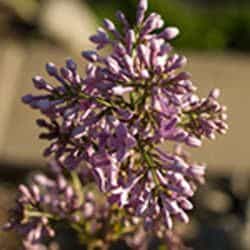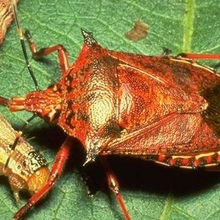|
(Editor's Note: This article was originally published on June 7, 2008. Your comments are welcome, but please be aware that authors of previously published articles may not be able to promptly respond to new questions or comments.) All The Lovely Flowers!
It is now spring soon to be summer and for the first time in a while that morning air is finally a bit warmer. The world all of a sudden seems brighter and something is awakened deep within the gardener's soul. The urge to get outside and prepare your bit of earth for a summer full of flowers is overwhelming. The plot is assessed, mental notes are made and the preparations begin. As the preparations are made and the spring clean-up is in full force, the garden centers of the big box stores and the local plant nurseries are preparing for your arrival. Little by little new plants for the season become available and as soon as the warmer temperatures are here for good, there is a proliferation of many varieties of plants. Every year there seems to be something you haven't seen before. The eyes and nose engage the brain and the heart begins to beat rapidly. Six packs of bedding plants are placed in the cart along with an "Oh This Is Beautiful!" flower and the ever popular "Wow, What Is This?!" plant. Your cart is bulging at the seams but you forge ahead conquering every last aisle ensuring you have not missed anything. Now, before I continue, I would like to think there is an omnipresent being - let's call him or her the owner of the box store or nursery you have just visited - letting out a rather large and ominous laugh as you leave the store. Why? Unless you bought plants you know will grow for you, chances are you will be back in a few weeks to a month purchasing more plants to replace the ones that died. Perhaps it is too cold at night or for people like me in the low desert of Tucson it just gets too hot during the day. Welcome to the first of a four part series of "You Can't Grow That Here". In this series I will share with you my own experiences of learning to garden in the climate I live in. I have learned through trial and error and because the error affects my pocket book, I would like to share my experiences in the hopes of helping another save a bit of money, anguish and disappointment. OR if you MUST have a particular plant that is not suited for your zone, I would like to help you create an environment in which it just may survive. First, let me say for the sake of argument, you can grow anything anywhere depending on the season. The question is how long exactly do you expect the plant to live? Case and point: I was in a well known department store the other day and near the check out line was a hanging basket of fuchsia. It was glorious. The colours were astounding and of course it certainly begged to be taken home. Had I done so, I would not have expected to have it beyond the middle of June. The heat would have killed it. Would it have been worth spending $18 on something I could only enjoy for two to three weeks? For me, if I am investing that much for a plant, I would like it to live all season and then possibly come back again the following season. But that's just me. So, Why Do We Do It?
Further, as gardeners we tend to have an affinity toward plants that offer some sort of sentimental value. For me, I love lilacs. I recall picking them as a child and getting lost for a moment in the heavenly fragrance. Until recently I had resigned myself to the fact I could not grow lilacs in the low desert. That was until I made the discovery of a species of lilac that would survive our hot summer and present a display of heavenly scented blooms every spring. I will talk more on that in the second part of this series. Perhaps you have spent your entire life in a climate that doesn't get too hot or cold and there was always an abundance of rain. Imagine the culture shock of moving to a new climate that would be the polar opposite. As you begin to come to terms with a new way of gardening, your heart, mind and soul yearn for the plants you once grew. The transition may be difficult but like anything in gardening, it can be overcome.
While it is true that a garden is ever evolving and nothing is ever permanent, there is within most of us a desire to have some sort of basis or foundation of plants that can always be relied upon for colour and scent year after year. It is during periods of transition that we are most susceptible to buying something that will often disappoint. No matter how much we try, the plant just won't perform or thrive or worse yet it will just shrivel up and die. I very rarely buy something that is not a true annual for my zone these days as the disappointment becomes too great a burden to bear. So although I was once able to grow certain plants I had to break the habit of seeking them out. You can too. This brings this first part of the series to an end. Coming up in part two: Finding an Alternative Images of lilac, plumeria and garden center are royalty free and were purchased from http://www.istockphoto.com/ Image of dead flower killed by frost used by permission from Bill Hilton Jr. The source is the website for |
You Can't Grow That Here! Part I
I chose the beautiful plumeria as the thumbnail image for this article because here in the low desert of Arizona, there is a huge temptation to grow this beauty. All it takes is one particularly cold winter and we realize why so many have said YOU CAN'T GROW THAT HERE!
Popular Gardening Topics

 So if a plant is not meant to grow in the climate in which we live, why do we buy it? For most of us, the allure of having a plant not readily available or perhaps one that is so fantastically beautiful we couldn't possibly live without it is too great. I mean botanists all throughout history went out of their way to discover new and exciting species so we could eventually add them to our garden collection.
So if a plant is not meant to grow in the climate in which we live, why do we buy it? For most of us, the allure of having a plant not readily available or perhaps one that is so fantastically beautiful we couldn't possibly live without it is too great. I mean botanists all throughout history went out of their way to discover new and exciting species so we could eventually add them to our garden collection. Breaking Old Habits
Breaking Old Habits















